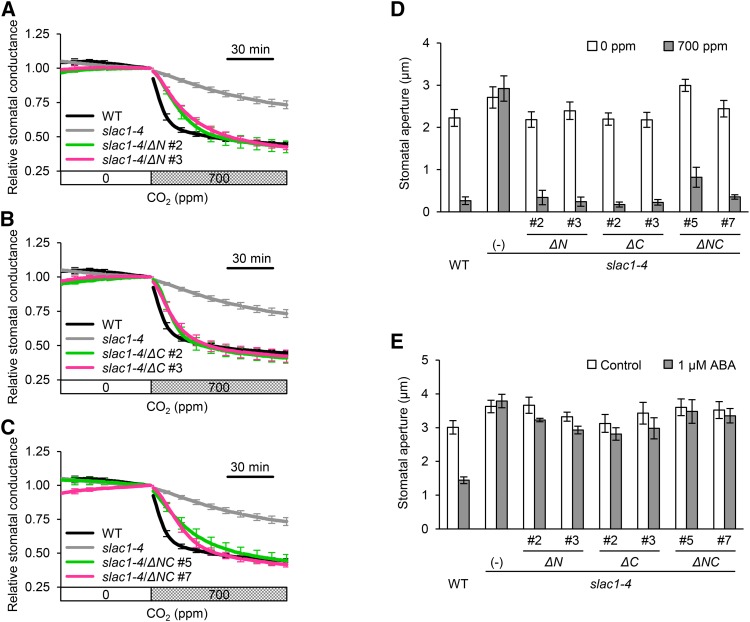Figure 2.
SLAC1 Truncated Proteins in the N-, C-, or N- and C-Terminal Regions Are Functional in the Stomatal Response to CO2, Whereas the Truncated Forms of SLAC1 Do Not Function in the ABA Response.
(A) to (C) Time-resolved relative stomatal conductance in response to [CO2] changes in the wild type, slac1-4 mutant, ΔN transgenic slac1-4 (slac1-4/ΔN) (A), ΔC transgenic slac1-4 (slac1-4/ΔC) (B), and ΔNC transgenic slac1-4 (slac1-4/ΔNC) (C). Wild-type (black) and slac1-4 mutant (light gray) control traces are the same in (A) to (C). Two independent transgenic lines per construct (magenta or green) were analyzed. Plants were kept under constant white light of 150 µmol m−2 s−1 at 22°C in 45% relative humidity. Conductance was normalized to the average conductance at the last 0 ppm data point. Error bars indicate ± se; n = 5 to 7.
(D) CO2 regulation of stomatal aperture in the wild type, slac1-4 mutant, and transgenic lines. Stomata in the transgenic plants closed in response to high [CO2]. White bars indicate low CO2 (0 ppm), and gray bars indicate high CO2 (700 ppm) conditions. Plants were kept under constant white light of 42 µmol m−2 s−1 at 22°C in 45% relative air humidity. Error bars indicate ±se; data from four independent experiments were averaged.
(E) ABA regulation of stomatal aperture in the wild type, the slac1-4 mutant, and transgenic lines. White and gray bars indicate stomatal apertures in the absence (control) and presence of 1 µM ABA. All of the transgenic lines, ΔN, ΔC, and ΔNC, failed to respond to ABA. Error bars indicate ± se; data from four to five independent experiments were averaged.

